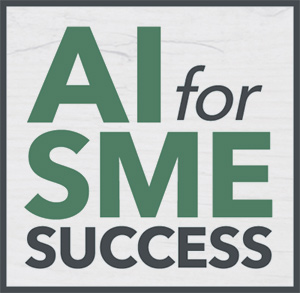This week, we tested four leading AI chatbots, ChatGPT, Gemini, Microsoft Copilot, and Claude, on a practical business task: route optimization.
Their performance was measured against a non-optimized baseline, where delivery locations were arranged alphabetically rather than by efficiency.
🚗 The top-performing AI tool cut total route duration by 46% and driving distance by 57% compared to the baseline.
✈️ The runner-up reduced duration by 32% and distance by 38%.
🚙 At the other end of the scale, the lowest-performing tool trimmed both duration and distance by only 1%, while the second-lowest improved duration by 8% but actually increased total driving distance by 4%.
👑✨ The names of the top and lowest performers on the task can be found in the full article: How to Choose AI Tools to Optimize SME Operations.
The detailed task description and key business insights are shared below.
🧪 The Test Setup
We created two files:
- A Standard Operating Procedure (SOP) explaining the task
- A data file listing 25 delivery destinations (schools across Edmonton, AB)
The SOP instructed: “Our company operates three vehicles that deliver office supplies from our garage. All three vehicles depart and return to the same garage after completing deliveries.”
Each chatbot was asked to: “Distribute addresses for 25 clients among three vehicles, optimizing each route to minimize total travel time and distance.”
The files were uploaded to shared with each chatbot for testing.
Gemini accessed them directly from Google Drive. ChatGPT and Copilot processed uploaded versions. Claude asked for the addresses to be copied and pasted in the chat.
✅ Validation of Results
As expected, the chatbots offered differing route suggestions.
To compare fairly, we used Google Maps via Gemini to calculate the distance and duration for all route options, including the baseline “non-optimized” route.
As we mentioned above, 🚗 the winning AI tool nearly halved both route time and distance, while the weakest performers made only minor gains. One tool even increased total driving distance.
👑✨ Which AI came out on top? Find the results in the article: How to Choose AI Tools to Optimize SME Operations.
💡 Key Takeaways
🔑 Your data is the key. AI tools are trained on public data, giving them broad general knowledge but no insight into your specific business. Your true competitive advantage comes from building business cases using your own data.
📤 Choose AI that can use your data. Some tools let you upload files directly to provide task-specific context, while others are natively integrated within your data ecosystem. Examples of the latter include Google Gemini, Microsoft Copilot, and Meta AI.
🎨 Manage variability in AI results. AI outputs can be all over the place: some spot-on, others partly right, and some completely off. To manage variability of AI results, avoid random prompting. Instead, select a specific repetitive business task and experiment with different tools until you achieve reliable, high-quality results.
♟️ Different tools, different strengths. Each AI chatbot shines in its own area. For example, Claude is known for less robotic, more human like writing. Microsoft Copilot benefits from its deep integration with Bing Maps. Match these strengths to your use cases.
🔴 Your Turn
Which AI tools are part of your workflow, and how do you use them?
I’d love to hear from you! Email me at natalia@nataliabrattan.com
Talk soon,
Natalia
